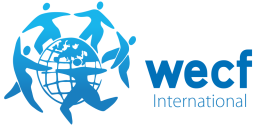ANSES invites WECF to present NanoRigo project at Nanomaterials & Health Committee
Friday June 17, with many French departments on red alert because of the heat wave, ANSES, the French Agency for Food, Environmental and Occupational Health & Safety, hosted their Nanomaterials & Health Comittee Meeting for the first time in over 2 years.
WECF is part of the Horizon 2020 research consortium Nanorigo. The EU-project NANORIGO (NANOtechnology RIsk GOvernance) aims to develop and implement a transparent, transdisciplinary and science-based Risk Governance Framework (RGF) for nanotechnology. Our specific role as WECF is to be a critical partner in the consortium, putting the precautionary principle first to protect the health of both workers at the workplace as consumers, and always taking gender specific needs and data into account.
WECF and partners were invited to present results and tools from the @EU_NANORIGO project at a special meeting today on #nanotechnology at ANSES, French scientific institute on health & environment, Paris pic.twitter.com/BLmdqHlKCa
— WECF international (@WECF_INT) June 17, 2022
WECF France was invited to present results of the NANORIGO programme during the meeting at ANSES, with an introduction given by Amelie Owen, WECF France’s Chemicals Policy Officer.
Presentations followed by consortium members, presenting results and tools developed within the project and explaining the importance of a risk governance framework for Nanotechnology.
- Dr. Bernd Giese from the Institute fuer Sicherheits- und Risikowissenschaften (ISR) at the Universitaet fuer Bodenkultur (BOKU), in Wien, Austria focussed on approaches for multi criteria decision analysis (MCDA), such as noise, toxicity, pollution, but also consumption.
- Blanca Pozuelo Rollón, from the Instituto Tecnologico del Embalaje, Transporte y Logistica (ITENE) in Spain gave a presentation on the NanoRigo Platform tool, NanoRigo web-based NGRF prototypes.
- Michael Steinfeldt, Senior Scientist University of Bremen, Germany, presented the PERST Tool
The tools being developed within the programme help us understand how lab results translate to real-life, how we can better assess risks, and how we can design products to be safer. Understanding how materials (e.g. from products) are released and get into living things, and what happens to them and whether these things change over a product’s lifecycle, e.g. are they different when its being made, or being used or eventually recycled or disposed of, are important questions.
For risk assessment the programme helps developing tools that allow:
- Assessment and comparison of different lab results with each other and expected effects in real-life
- Screening early in a product’s development, for human and environmental effects and considering the product’s life-cycle
- Integration of health and environment risk assessment with economic, social and ethical aspects
- Allow safer products onto the market
- Allow more efficient development
- Reduce the time to get products to the market
- Encourage greater collaboration between all relevant organisations to do so
In the end this will help:
-
- Scientists – understanding risks from the earliest stage of their research
- Inventors – are the materials they are using safe, are there alternatives?
- Businesses – what needs to be considered to get a product to market?
- Environmental groups – access to accepted tools to make their analysis
- Regulators – do some regulations need to be tighter? Can others be relaxed?
- Government – are there gaps in our knowledge and if so, how might these be filled?

Nanotechnology (NT) is simultaneously an emerging field and one which is converging with other fields. From smaller and faster computers, more accurate medical diagnostic devices, and implants to resist infections, to stain/water/fire-resistant fabrics and cell-specific drug delivery, nanotechnology is changing everyday human life for the better. Due to their small size and large specific surface area, nanoparticles (NPs) have unique properties which distinguish them from other substances. However, there are concerns that these properties, in combination with the increasing use, could potentially result in occupational, end-user, or environmental risks. As such, identifying and disseminating the risks arising from exposure to hazardous NPs is pivotal. The ultimate aim of NANORIGO therefore is to deliver a Risk Governance Framework for the safety of nanomaterials, for risk assessment, hazard and exposure, human health and environment, and risk mitigation including regulatory aspects of safe-by-design.
Currently many products at the market incorporate nano materials for which a proper risk assessment can not be made. Contrary to the European Chemicals Regulation’s REACH principle ‘no data no market’, the presence of nano materials in its content is generally not reported either. Given this situation, it is the demand of many stakeholders (industrial companies as well as consumers and their organisations) to be informed about the possible dangers of nano materials used in their products to be able to perform an independent risk assessment and if deemed necessary, to develop a risk management strategy. This is very important taking into account the European GREEN DEAL for a non-toxic circular economy, and the use of the precautionary principle, as advocated by European and National governments in case of knowledge gaps and/ or uncertainties. Based on this principle, a diversity of tools need to be developed to support consumers, employers and employees in assessing uncertain risks of nano materials and nano products and performing risk management.

